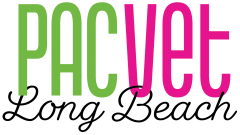Labs are for in-person PacVet attendees only.
If you’re already registered for PacVet and you’d like to add a lab to your registration, please complete this online form. If space is available, our staff will add you to the session. If the session is full, you will be added to a waitlist. If you are registering for a lab, we will contact you to arrange payment before confirming your registration.
If you would like to attend one of the labs but have not registered for PacVet yet, please sign up when you register at PacVet.net.
AVANT WELLNESS LAB
Sunday, June 29 | 1:30-5:15 PM
Must pre-register. Space is limited to 20 registrants max. Limited to DVMs only.
Additional fees apply: CVMA Members: $100 • Non-Members: $150
Laser Therapy Breakthroughs: Integrating Multimodal Therapies for Optimal Outcomes
Discover how to enhance canine patient outcomes through the strategic integration of laser therapy, cryotherapy, PEMF, and massage therapy. This workshop combines engaging case studies with hands-on demonstrations, equipping veterinary professionals with practical skills to use the laser and implement multimodal treatment plans. Learn to address common canine conditions effectively, improving mobility, reducing pain, and enhancing quality of life.
Learning Objectives:
1. To help veterinarians better understand how laser therapy can transform their practice, their outcomes, and their bottom line.
2. Increase veterinarians’ understanding about lasers, their uses, and benefits to their patients.
Sponsored by:
![]()
ESAOTE BASIC ULTRASOUND LECTURE/LAB
The basic ultrasound lecture/lab is sold out. To be added to the waitlist, please click here.
If space opens up, a CVMA staff member will contact you to officially register.
Lecture • Friday, June 27 • 9:50 AM-12:50 PM
Lab • Saturday, June 28 • 9:00 AM-12:00 PM
Must pre-register. Space is limited to 20 registrants max. Limited to DVMs only.
Additional fees apply: CVMA Members: $450 • Non-Members: $500
This course is designed for beginners starting out in ultrasound or as a refresher course on the normal limits of the common abdominal anatomy for an abdominal ultrasound examination. The lecture portion of this course will provide the foundation for the interpretation of normal organ size and normal echogenicities for each organ and how to identify the liver, spleen, kidneys, urinary bladder, gallbladder, and the segments of the gastrointestinal tract. There will also be a discussion on the spectrum of “normal” for our juvenile patients versus our geriatric patients. There will also be case examples of common pathology or processes seen within the abdomen. The lab portion will be practicing the scanning techniques for the “Big 5” (liver, spleen, left and right kidneys, and bladder), along with the general scanning of the gastrointestinal tract.
ESAOTE INTERMEDIATE ULTRASOUND LECTURE/LAB
The intermediate ultrasound lecture/lab is sold out. To be added to the waitlist, please click here. If space opens up, a CVMA staff member will contact you to officially register.
Lecture • Friday, June 27 • 2:00-5:00 PM
Lab • Saturday, June 28 • 2:00-5:00 PM
Must pre-register. Space is limited to 20 registrants max. Limited to DVMs only.
Additional fees apply: CVMA Members: $450 • Non-Members: $500
This course is designed for scanners wanting to advance their basic skill set in ultrasound and to image the smaller anatomy within the abdomen. The lecture portion of this course will provide the foundation for the interpretation of normal organ size and normal echogenicities for the smaller organs like the pancreas, lymph nodes, and adrenals. There will also be further evaluation of the gastrointestinal tract and tricks for imaging it, along with tricks on how to scan the “deeper” organs like the liver and the head of the spleen. Vascular scanning and mapping will also be discussed. The lab portion will be practicing the scanning techniques for smaller anatomy like the pancreas, adrenals, and lymph nodes. There will also be practice in scanning the gastrointestinal tract and identification of all the small bowel and large bowel segments.
Sponsored by:


